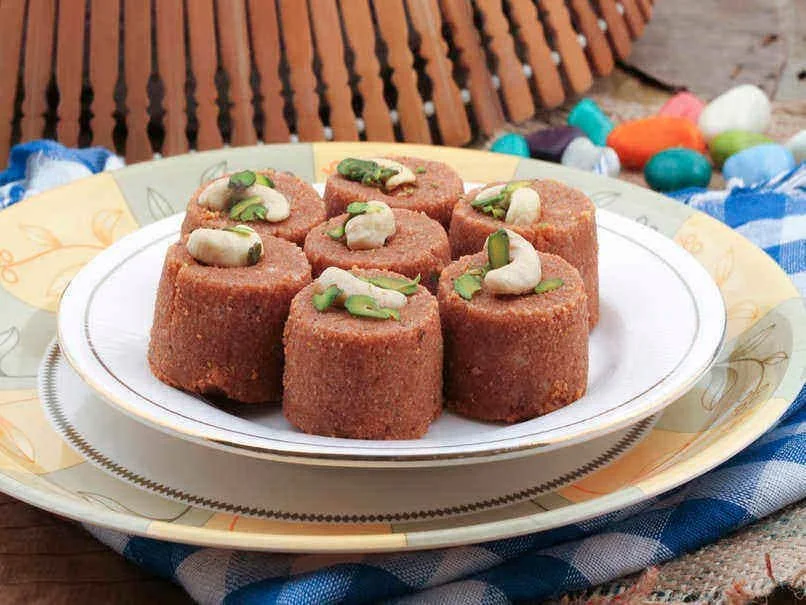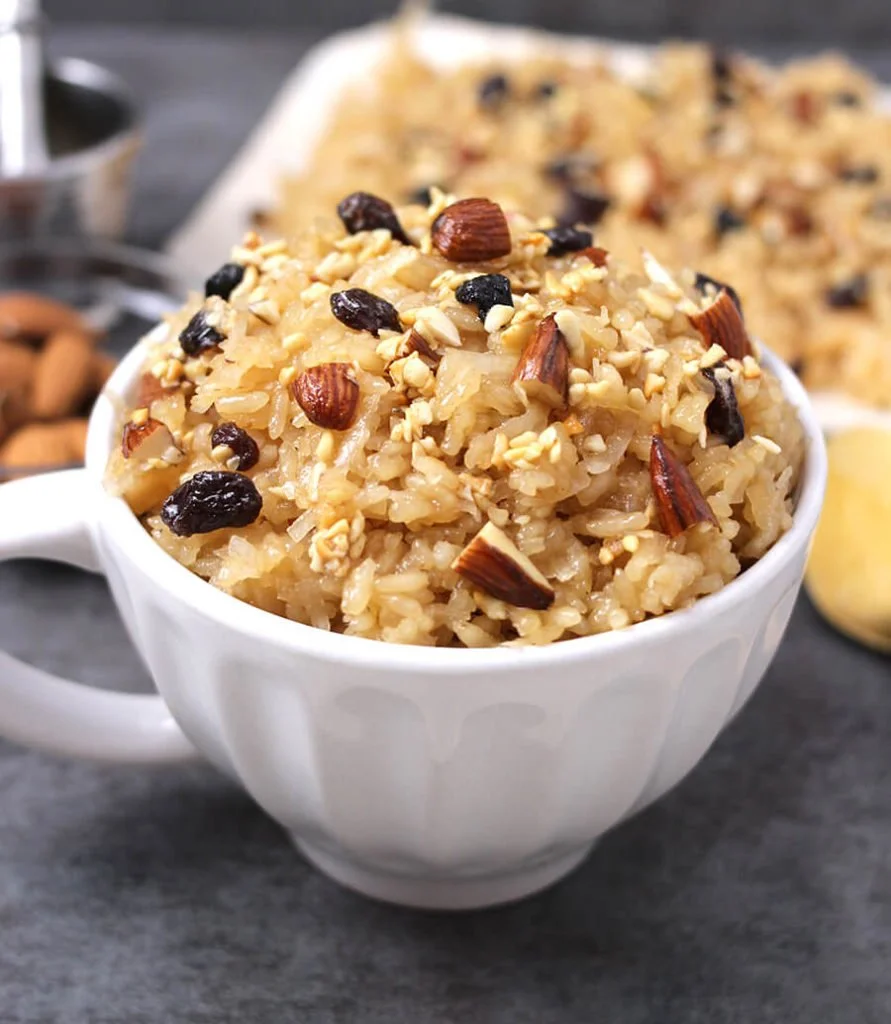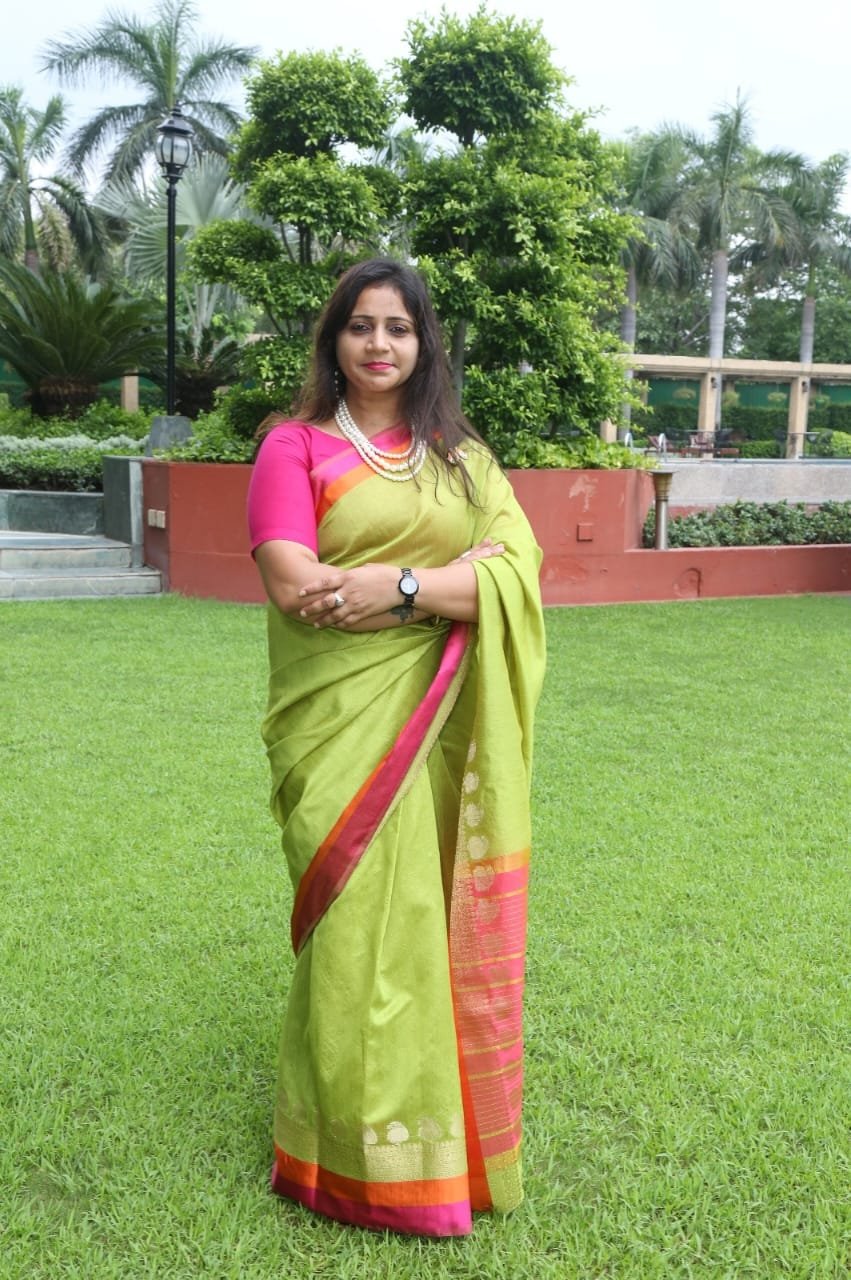Ingredient Ideology | Festive Treats On A Platter By: Dr. Kaviraj Khialani- Celebrity Master Chef.
/FESTIVE TREATS ON A PLATTER
With just around a fortnight into the new year 2022, carrying all rays of hope and positivity expecting the onset of the year bringing in all the best, best of health, work, and relationships for all of us. It also rings in one of the most auspicious festivals of Hindus which is Makar Sankranti. The significance of Makar Sankranti is signified by the sun's entry into Capricorn. On this day, the sun turns Uttarayan and enters Capricorn. Hindus from different corners of the nation are observed bathing in holy rivers on Makar Sankranti. It is set by the solar cycle and corresponds to the exact time astronomical event of Sun Entering in Capricorn sign and is observed on a day that usually falls on 14 January of the Gregorian calendar, but on 15 January in Leap Years.
Makar Sankranti follows Lohri by a day and is a popular festival in most parts of the country, but the festivity is at its prime, mainly in North India. The festival marks the advent of the harvest season and also signifies the end of Winter as the days start getting longer. Makar Sankranti marks the harvest season for Maharashtra, which is why it is celebrated throughout the state with great passion. A day before the festival begins, people clean their houses and make sure that everything is immaculate.
Most also wear ethnic Maharashtrian clothing during the three days of the festival. According to the Hindu calendar, there are a total of twelve Sankranti in a year. Further is divided into four categories which are known as Ayaan, Vishuva, Vishnupadi, and Shadshitimukhi Sankranti. The tradition of kite flying is for a healthy exposure to the early morning sun. Every year, people celebrate Lohri and Makar Sankranti by making til (sesame seeds) laddoo. These laddoo are used in worship, and eating them also helps keep the body warm.
The rays are very healthy and provide a rich source of Vitamin D. The sunlight also helps in getting rid of skin infections and diseases. The day of Makar Sankranti is considered very important for the people of this zodiac sign as the Sun moves to Capricorn on this day. They should donate Khichdi, blankets, clothes etc. On the day of Makar Sankranti, these people are advised to donate khichdi, oil and warm clothes. The scientific importance of these sweets is that sesame seeds help in keeping the body warm and provide good amount of oil that is essential to provide moisture during winter. Makar Sankranti is a festival famous for its sesame sweets and kite flying.
Some of the most popular foods prepared, served and eaten during makar Sankranti include Til ke Laddoo, Puran Poli, Khichdi, Payesh, Pinni, Gur ki Gajjak, Chikki and more. The combo of Til and Gur actually comes from Maharashtrian phrase “til gud ghya aani god god bola” This is a common expression used to greet family and guests in Marathi households during Sankranti celebrations. The expression literally means 'Eat til and Gur and speak sweet'.
While on the other hand, Lohri is the celebration of the arrival of longer days after the winter solstice. According to folklore, in ancient times Lohri was celebrated at the end of the traditional month when winter solstice occurs. It celebrates the days getting longer as the sun proceeds on its northward journey. It's a new year and now that January is almost half over, Lohri is close by. There is an excitement in the air as there has been little cause to celebrate in the past year due to the Coronavirus pandemic. But with a vaccines and boosters doing a great job, everyone is starting to feel hopeful and joyous again. This year Lohri is just around the corner people are preparing for the festivities earnestly. Lohri can be celebrated in a large way with the whole community or it can be done in a small scale, with one’s family or household. Considering the risk of spreading virus and its variants, it is best adviced to take celebrations keeping in mind all Covid appropriate behaviors as well.
Here are a few facts about Lohri – The Harvest Festival!
* From a less religious and more linguistic perspective, it has been said that since the consumption of til (sesame seeds) and (jaggery) is traditional at the festival, it could be that the words til and Gur merged to become tilorhi, which eventually got abbreviated to Lohri over the years. The word Lohri is also said to have its origins in the regional word ‘loh’ refers to the warmth and light of fire.
* The name of this festival has many variations and possible origins. It is said to be the name of the Goddess Lohri, the sister of Holika, who is celebrated on Holi. Meanwhile, in Punjab it is called Lohi. Lohi was the wife of Sant Kabir, an important figure in the Sikh religion.
* Lohri being a harvest festival, though those who live in rural areas of north India and those who work in agricultural fields would already know this, but those in Southern India and those who live in Urban areas might be unaware of the significance. The winter crop traditionally Rabi is harvested in the days up to Lohri and then on the festival day all those involved in the labour gather around big bonfires and socialise and celebrate the harvest.
* It is a Hindu religious festival, It’s hard to say if it started out as a religious festival or an agricultural one but in Hinduism, it is believed to celebrate the Goddess Lohri and the God Agni. But, Lohri is celebrated by farmers of other religions too.
* It is a Solstice festival Many religions worldwide have a winter solstice festival such as Christmas or Yuletide. Lohri is the Indian equivalent, though it takes place later due to seasonal differences in the place of origin. It marks the end of winter
Lohri is said to be on the last truly cold day of the season, after which every day will get longer and warmer easing into Spring. It is not to be confused with Holi, which marks the end of Spring and beginning of Summer or Basant Panchami which marks the beginning of Spring.
*It is the longest night of the year, Lohri has the shortest day and longest night, after which every day will get longer. It's no wonder then that all the festivities for Lohri take place after the Sun has set. It also marks a new financial year historically, the revenue for winter crops used to be collected on Lohri. This custom is still given importance in the Sikh community.
Besides, the family and friends coming together during this festive occasion, some of the most popular foods prepared, served and eaten on Lohri include Sarson ka Saag, Makkai di Roti, Pindi Chane, Gur ki Roti, Murmur Laddoo, Chironji aur Makhane ki kheer, til ki burfi, Dry Fruit wali Chikki, Gur ka Halwa, Gajjak, Golden Pinni, Coconut Chikki / Bars etc.
Extending festive greetings to one and all on the auspicious festivities, here are a few easy to make festive recipes on Makar Sankranti and Lohri for all our valued readers:
Recipe-1] TIL GUR LADOO
[ An all-time favourite sweet made during makar Sankranti in Maharashtra]
ingredients:
white sesame seeds-1 cup
ghee- 3-4 tsp
jaggery- 1 cup grated
roasted crushed peanuts-1/4 cup
green cardamom powder-1/4 tsp
Method:
1. Prepare all the ingredients to start with the recipe.
2. Using a dry pan, lightly roast the sesame seeds for 4-5 mins, remove and keep aside.
3. Now warm up ghee in a thick bottomed pan, add in the grated jaggery and mix, continue cooking on a low flame stirring it up in order to melt all the jaggery in the pan.
4. We can now add in the green cardamom powder, crushed peanuts and roasted cooled down sesame seeds to the mixture, turn off the flame.
5. Remove onto a greased thali and using a greased hand and finger tips divide the mixture while still warm into lemon sized balls and shape them up, allow to settle, cool and store in an air-tight jar and use as required.
Recipe-2] NOLEN GUR PAYESH
[A festive sweet made during Makar Sankranti in Bengal and parts of East India]
Ingredients:
Full fat milk- 750 ml
Jaggery/ palm jaggery- 1 cup grated
Green cardamom- ¼ tsp powder
Brown sugar/ sugar/ condensed milk to taste as needed
Aromatic rice/ basmati rice- ½ cup
Almonds- 2-3 tbsp. cut
Ghee- 2-3 tbsp.
Raisins- 2-3 tbsp. cut
Cashews- 2-3 tbsp. cut
Mava/ khoya- 2-3 tbsp. grated
Method:
1. In a pan add little ghee and roast the nuts for a few seconds, remove and keep aside.
2. In a thick bottomed pan, boil and simmer the milk for 15-20 mins, now add in the washed and soaked rice for 20 mins, cook the rice on a low flame, keep stirring, allow rice to cook.
3. Now add cardamom powder, mava/khoya, once rice gets mushy add jaggery, condensed milk or sugar as well and allow to thicken further to a nice creamy texture.
4. Finally add in the roasted nuts, mix well and serve the payesh warm or chilled.
Recipe-3] MAKKAR SANKRANTI FESTIVE KHICHDI
[A Classic recipe with the goodness of rice and lentils simmered to perfection, mildly spiced, a perfect must have on the auspicious occasion]
Ingredients:
Split black gram-1/2 cup
White rice-1 cup
Ghee-1/4 cup
Oil-2 tsp
Cloves- 4-5 no
Black peppercorns- 4-5 no
Cinnamon stick- 1 piece
Black cardamom- 2 pc
Dry red chilies- 2 no slit
Green chilies- 2 no slit
Hing-1/2 tsp
Jeera seeds- 1 tsp
Curry leaves- 10-12 no
Ginger- 1 tsp chopped
Onion-1 small chopped, optional
Turmeric powder-1/4 tsp
Red chili powder-1/4 tsp
Salt to taste
Garam masala powder-1/4 tsp
Water as needed
Assorted mixed veggies as desired can also be added.
Coriander leaves- 2 tbsp. chopped
Method:
1. Pick and clean, wash and soak the rice and the split lentil separately for around 20 mins.
2. Heat oil and ghee in a pan, add in the whole spices and flavor the pan with them for a few seconds, add in the hing, cumin seeds, onions, ginger, chilies, curry leaves and the aromatic ingredients to add value to the recipe.
3. Now add in the rice, lentils all drained well, also add salt and all powdered spices, give them all a nice stir, add double quantity of warm water and mix, add coriander leaves, any choice of veggies if desired.
4. Once the khichdi comes to a boil, simmer cover and cook on a low flame until the rice and lentils are well cooked, add assorted nuts for garnish and serve the khichdi with bowl of curd/ salad/ raita/ papad.
Recipe-4] KHOYA AUR MAKHANE KI KHEER
[ A delicately flavoured sweet made using lotus seeds, nuts, adequately sweetened and enriched just right for the season]
Ingredients:
Milk- 1 liter
Sugar- 1 cup
Ghee- 2-3 tsp
Lotus seeds/ makhana- 1 and ¼ cup
Green cardamom powder-1/4 tsp
Raisins- 2-3 tsp
Walnuts- 2-3 tsp sliced
Almonds- 2-3 tsp sliced
Cashews- 2-3 tsp sliced
Khoya/ mava-1/4 cup
Condensed milk- ¼ cup
Rose petals- ¼ cup
Saffron-1/2 gm- optional.
Method:
1. Prepare all the ingredients for the makhane wali kheer and keep ready.
2. Simmer and reduce the milk for 30 mins. now add in the sugar, green cardamom powder and mix well.
3. Add in the khoya and mix, cook for 4-5 mins. add in half the nuts and simmer for 4-5 mins.
4. As an option I prefer to saute the makhanas in a little ghee with green cardamom powder for a few mins and then add them into the simmering milk, cook them for 8-10 mins and turn off the flame.
5. Garnish the kheer with rest of the nuts, saffron if desired and serve it in dessert or sweet serving cups and offer it warm or chilled as preferred, decorate with rose petals.
Recipe- 5] ATTE KI PINNI
[ A famous home style sweet made with whole wheat flour blended with assorted nuts and delicately hand shaped with all the love for the festivity]
Ingredients:
Whole wheat flour- 4 cups
Ghee- 300 ml
Sugar- 400 gms
Green elaichi powder- ¼ tsp
Melon seeds-2-3 tsp
Gaund- 1 cup/ 100 gms
Almonds- 2 tbsp. chopped
Cashews-2 tbsp. chopped
Raisins-2 tbsp. chopped
Walnuts-2 tbsp. chopped
Black cardamom powder-1/4 tsp
Method:
1. Prepare all the ingredients and keep aside.
2. Heat a little ghee and saute the gaund for a few seconds and remove, keep aside, cool crush and keep it on the side for later use.
3. In the same pan with a little ghee fry the nuts and melon seeds, remove and keep aside.
4. Heat the final lot of ghee and now start bhunaoing the atta on a low flame until it gets a nice nutty brown color.
5. Remove from the flame, allow to cool down, now add in the cardamom powders and powdered sugar into the atta and mix well.
6. Add in the nuts and crushed gaund and shape equal portions of the mixture into pinnis getting the typical finger marks on it. Store in air-tight jars and use as required.
RECIPE- 6] GUR WALE CHAWAL
[ Meethe Chawal as we also address this as, one of the most awaited moment to enjoy the festivity with a hot portion of this mildly spiced, generously sweetened rice delicacy]
Ingredients:
Rice- 1 and a half cup
Ghee- 3-4 tbsp.
Cinnamon stick- 1-inch piece
Green cardamom- 3-4 no
Black cardamom- 1-2 no
Cloves -3 4 no
Jaggery- 1 and a half cup
Water-around 2-3 cups
Almonds- 2 tsp chopped
Pista- 2 tsp chopped
Raisins- 2-3 tbsp.
Walnuts- 2-3 tsp chopped
Cashews- 2-3 tsp chopped
Saffron- ½ gm
Silver varq- ½ leaf
Dates- 2-3 tbsp. chopped
Method:
1. Prepare all the ingredients for the sweet rice delicacy.
2. Clean, wash and soak the rice for 20 mins.
3. Heat up ghee in a pan and saute the spices, add in the drained rice and saute for 1 min.
4. Add in the hot/ warm water and allow the rice to come to a boil, simmer until ¾ done and cooked.
5. Now add in the grated jaggery and half the amount of nuts, mix and cover the container, simmer for 12-15 mins until rice is nice and well done, using a fork lightly open up the rice, check for sweetness and add in some chopped dates, saffron soaked in a little warm milk towards the end.
6. Dish out the sweet rice into a serving bowl, dessert cups, garnish with rest of the nuts, some silver varq if desired and enjoy the festive sweet with family and friends.
++++++++++++++++++++++++++++++++++++++++++++++++++++++++++++++++++++++















